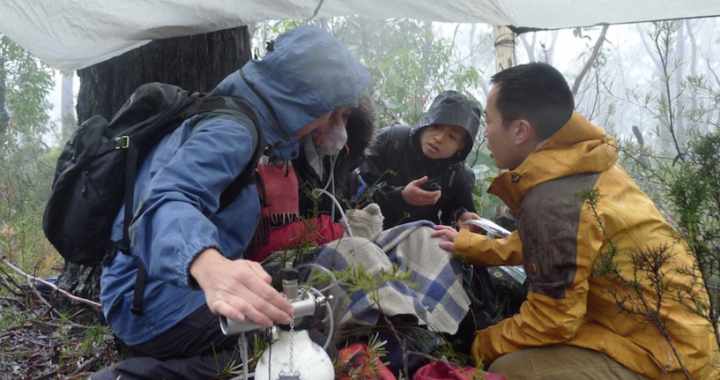Veteran of a lots of semi-planned nights out in the mountains and safety consultant to hundreds of expeditions and trail runs, Lucas Trihey explains what event crew can do to prepare.
Event crew, whether paid or volunteers are the backbone of Australian trail running. Crew often end up miles from backup and might need to depend on their own resources if stuff happens.
SKILLS AND PREPARATION
- Learn to navigate. If event crew can navigate reliably they are a fantastic resource if runners go missing or if things start to go pear-shaped. Navigating in the bush, mist or rain is our bread and butter at ESS. Our staff mostly come from an Outdoor Recreation background and have quals and experience in off-track navigating because it’s super-important when working at events in rough or remote areas. You can acquire these skills too.
- Learn and practice these skills:
- Take a bearing off the map and follow it in the bush.
- Learn about contour lines and topographic maps. Once you understand topo maps you can“see” the shape of the land by looking at the map.
- Find out how to plan a route off-track and through the bush.
- Learn to navigate in mist or snow (and practice!).
- Discover what a “hand-rail” feature is.
- Knowhow to take a back-bearing and triangulate off known features to work out your position.
- Find out about magnetic variation.
- Get a quality base-plate compass.
- How to learn? Rogaining is an awesome sport with events all around Australia. Make a team of friends, do a couple of rogaines and your nav will improve out of sight. https://rogaine.asn.au/ Or do a nav course with an adventure company or scouts.
- Learn to use a GPS app in your phone – these can be a huge help, just be careful with battery life, watch out for water damage and don’t break it 🙂
GEAR – PACK A GRAB BAG OF ESSENTIALS
Have a grab bag packed and with you in case you need to go bush to help at a remote marshal position or to stay and help an injured runner. This is the deluxe list with everything you could conceivably need – use it as a checklist for small or big events:
- 50+ litre pack. The extra space is useful if you need to take extra gear to give the safety crew a hand or take more supplies to someone.
- Wet weather gear. In alpine or cold regions include jacket and over-pants.
- Shoes or boots that’ll keep your feet drier for longer in wet conditions. If you end up staying out for hours (or overnight?)your feet will thank you.
- Head torch.
- Knife or multi-tool
- Personal first aid kit
- Bovvy sack. An awesome lightweight shelter to keep a few people alive until help arrives. Don’t use a stove inside without plenty of ventilation. https://www.ebay.com.au/itm/Mountain-Leaders-4-5-man-Bothy-Bag-Kisu-Shelter-Survival-Cover-tarp-camping/362204807291?hash=item545516c07b:g:YA4AAOxyoA1RU0Lb:rk:5:pf:0
- OR a tarp or lightweight fly with cord for rigging a rain shelter.
- Map
- Compass
- GPS app in your phone (or even better a stand-alone GPS device that will run on AA batteries for a couple of days).
- Water
- Snacks
- Spare socks
- Thermal tops and bottoms.
- A lightweight plastic bag to keep spare clothing dry.
- Fire kit. A ziplock bag with newspaper, matches and a fire-lighter.
BE PREPARED FOR THINGS TO GO WRONG
Most of the time we are a lucky species, however stuff DOES happen and proper preparation can be life-saving.
Develop a pessimistic streak – ask the ”what ifs”:
What if the runners don’t finish by dark as planned?
What if an Aid Station runs out of water or food?
What if a bunch of runners get lost?
Will a mechanical break down mean a crew vehicle can’t get much needed water and supplies to an Aid Station in time?
Will exhausted runners survive a deterioration of weather in Alpine areas?
GET SCEPTICAL
Get used to the idea that tired runners are no longer normal people. “Runner’s brain” can lead them to make bad decisions, miss turns, forget to navigate. They don’t put on warm gear until too cold, they forget to eat enough, they push on when exhausted and then collapse in places where it’s hard to get them.
Do organisers have reserves of resources? Surge capacity can be very useful when a few things go wrong at once (spare crew, vehicles, equipment etc).
Learn about the compounding and cascading effects of small mistakes and omissions in a complex organisation. Sometime an otherwise inconsequential error can be the straw that breaks the camel’s back.
How good is the Risk Management Plan? Does it look objectively at what might go wrong or does it gloss over the true risks?
Are there crew in the team who can navigate to an injured, ill or lost runner in the rain and dark?
